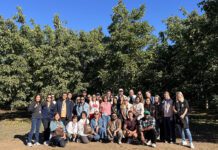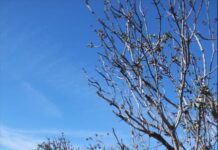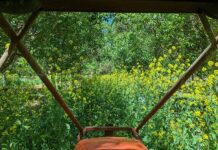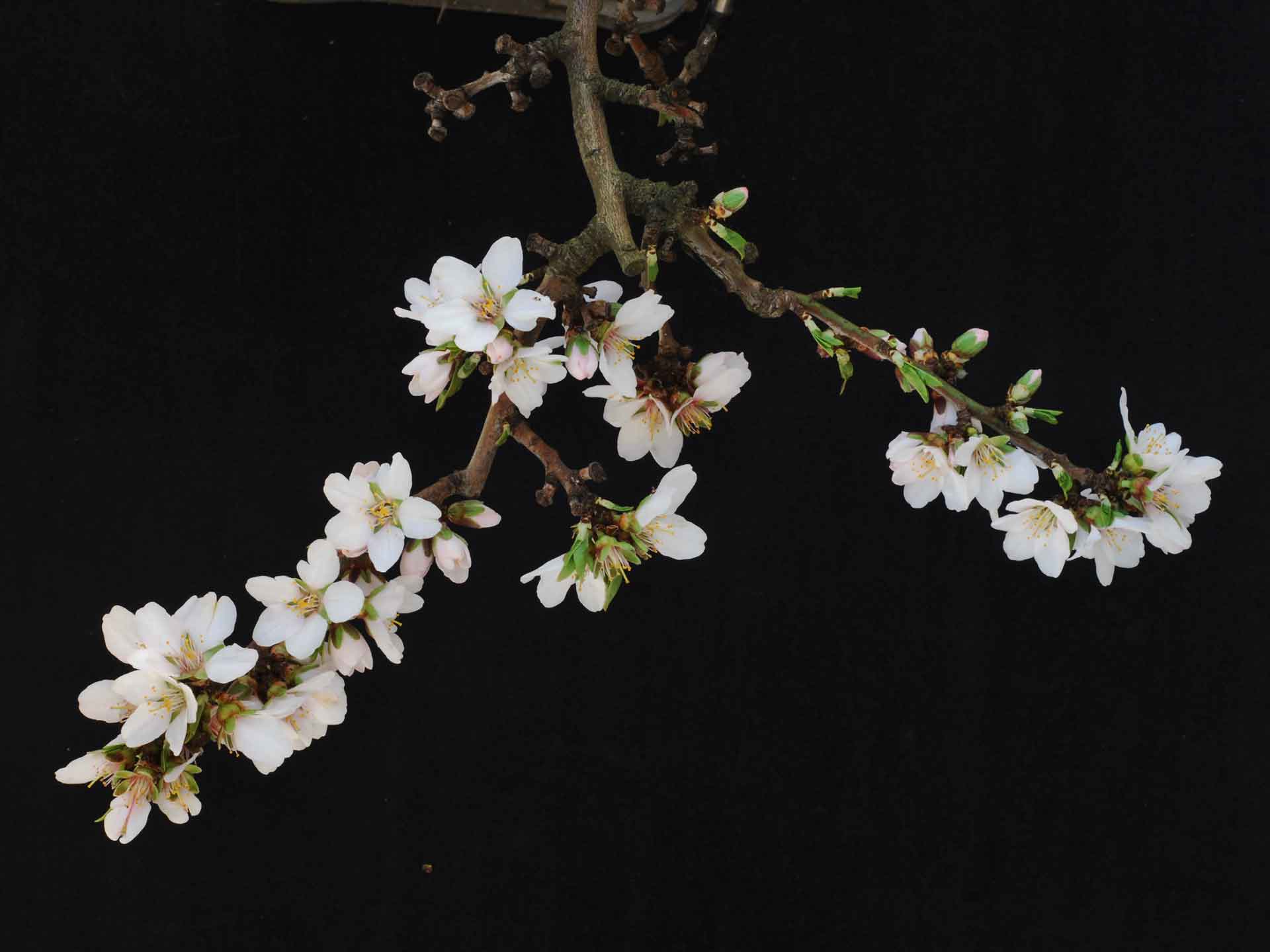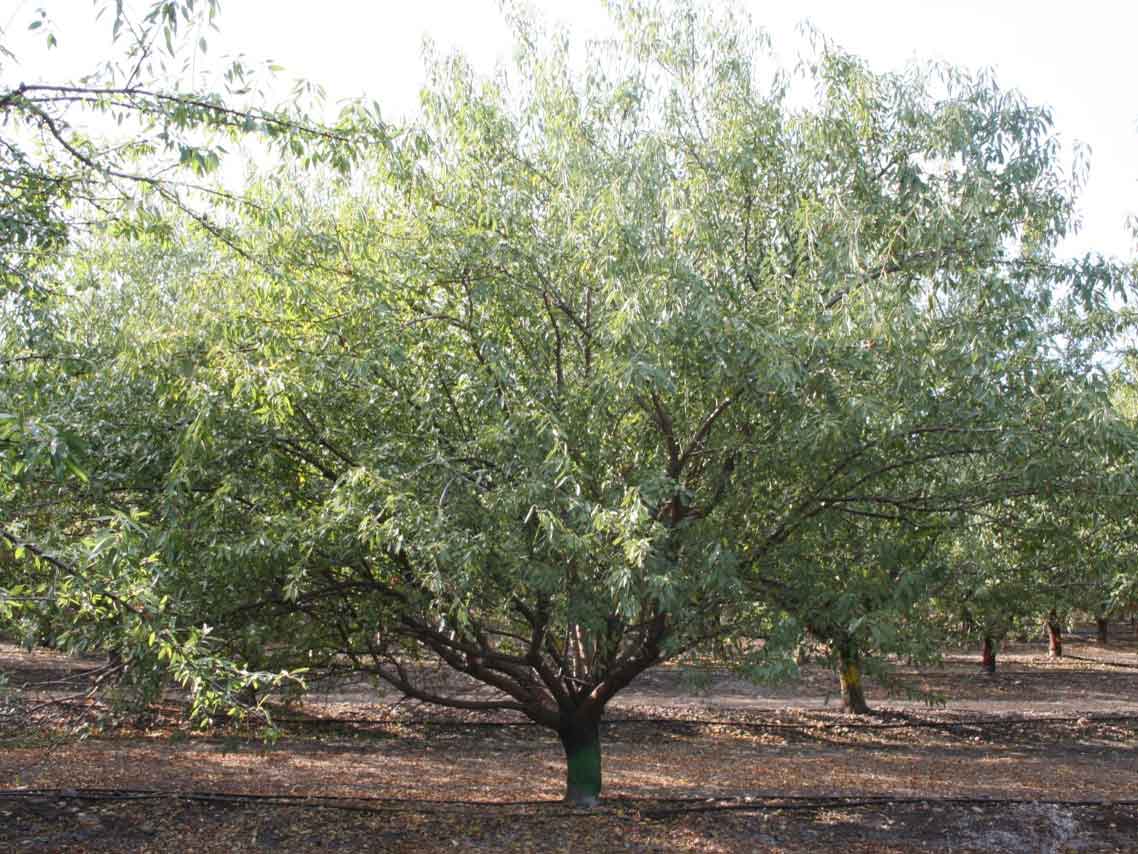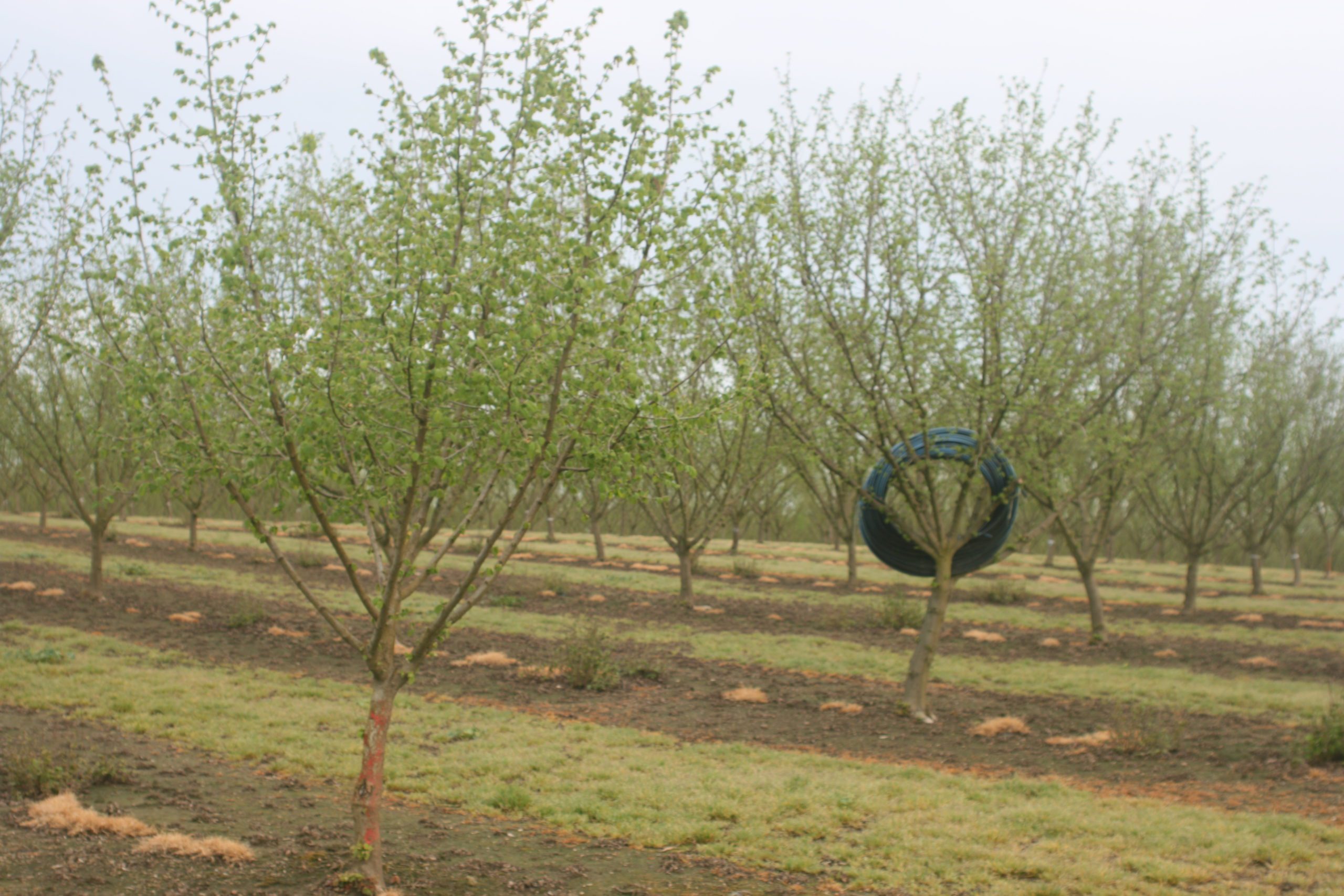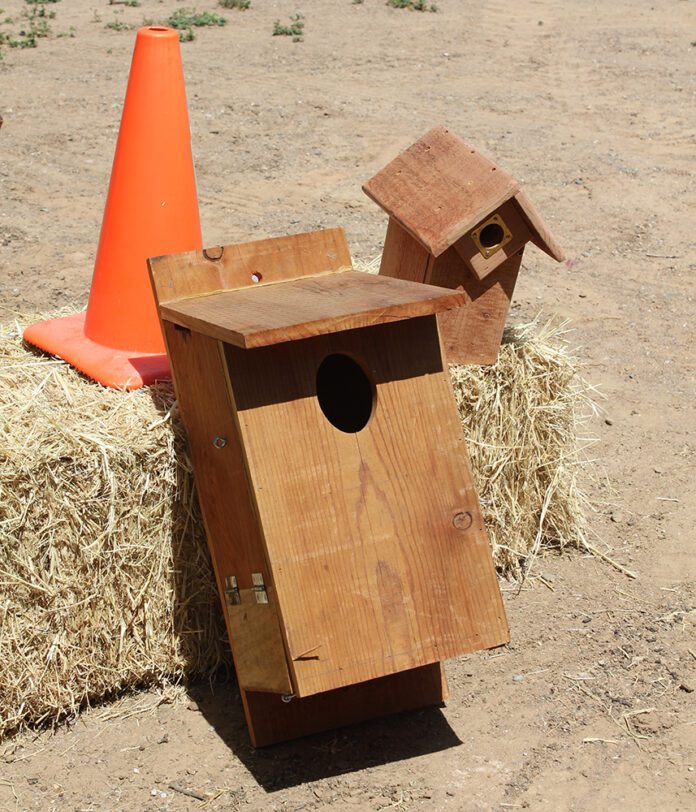
Providing nest boxes for avian predators is one way of enticing them to take up residence in your orchard. Barn owls, American kestrels, western bluebirds and tree swallows are cavity-nesting birds that will use nest boxes in orchards and stick around for a meal of rodents, pest birds or insects.
Breanna Martinico, UC ANR human-wildlife interaction advisor, said cavity-nesting birds can be attracted to orchards with specially designed and properly maintained nest box networks. The nest boxes replace much of the natural nesting places for these avian predators that have been lost due to development. Their natural nesting sites can also be lost to the invasive European starlings that compete for the natural nest sites.
Barn Owl Habitat
Barn owls are the predominant avian predator species. Their diets are primarily gophers, voles, rats and mice. Martinico presented evidence of barn owl activity during the annual Nickels Soil Lab Field Day. On the ground under a nest box adjacent to a block of almonds were remnants of owl meals: bones and teeth of gophers and voles.
“The predator birds won’t eliminate rodents in an orchard, they contribute to IPM programs,” Martinico said.
She said as a biological control measure, barn owls specialize in small rodents including rats, mice, gophers and moles. A family of barn owls in an orchard can consume 3,000 to 4,000 rodents in a year. They also occasionally eat small birds and insects. Using nest boxes will attract the birds, and they will continue to use them for several years, building up their populations.
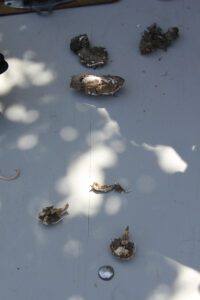
The nest boxes are best placed on orchard edges away from busy roads. They are mounted on a pole at least 10 feet high with the opening facing northeast. Spacing can be relatively close as barn owls may tolerate some human activity or noise in the daytime.
Martinico recommended starting with a “reasonable” number of boxes and adding more when 50% to 60% become occupied.
Proper design and maintenance of the nest boxes will ensure their return on investment. Since barn owls, the most likely occupants, are not territorial, they can be placed closer together on property. Shade from summer heat means orienting the opening toward the east. Martinico said signs the boxes are being used include “a rodent graveyard” on the ground under the boxes.
Owls have a long nesting season. Eggs are incubated for 30 days, and nesting development takes about 60 days. After nesting season, it is important to maintain the boxes by clearing out owl pellets and fecal material. Owls regurgitate the undigested bones and fur of their prey in the form of pellets. Martinico said it is important to clean the boxes at least once a year after the young have fledged and the boxes are unoccupied, generally from August to November. Winter cleaning is not advised as the birds may already begin nesting. It is recommended that the roof or one side of the box be hinged so it can be opened for cleaning. Wood chips or shavings can be placed inside the cleaned boxes for bedding.
Other Avian Predators
American kestrels are another avian predator that will eat small rodents, reptiles and insects. Unlike barn owls, kestrels are territorial, and the nest boxes should be spaced a half mile apart. Cleaning of their boxes can be done late summer through early winter. Boxes should be inspected and cleared of debris. For proper egg laying and nesting, bedding of wood shavings is advised. Kestrel eggs are incubated for 30 days, and development of the young until fledging takes 30 days.
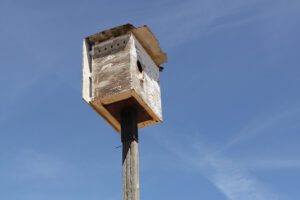
Other avian predators that can take up residence in nesting boxes are western bluebirds and tree swallows. These are mainly insect foragers, and they forage by perch hunting or gleaning bugs off plants. Swallows fly with their mouths open and have specialized feathers to direct bugs into their mouths. Boxes to attract these birds should be mounted on poles at least 5 feet high and 50 to 100 yards apart. Openings should be 1.5 inches in diameter. Maintenance of the boxes should be performed once a year, removing all debris. These birds bring in their own nesting materials. The eggs are incubated for about two weeks, and two to three weeks later, the young are ready to fledge.

Cecilia Parsons | Associate Editor
Cecilia Parsons has lived in the Central Valley community of Ducor since 1976, covering agriculture for numerous agricultural publications over the years. She has found and nurtured many wonderful and helpful contacts in the ag community, including the UCCE advisors, allowing for news coverage that focuses on the basics of food production.
She is always on the search for new ag topics that can help growers and processors in the San Joaquin Valley improve their bottom line.
In her free time, Cecilia rides her horse, Holly in ranch versatility shows and raises registered Shetland sheep which she exhibits at county and state fairs during the summer.






